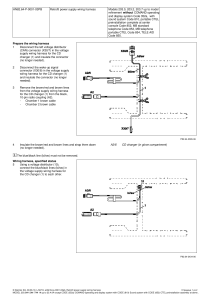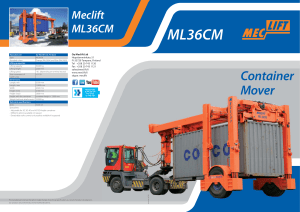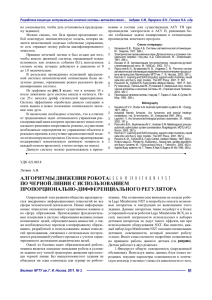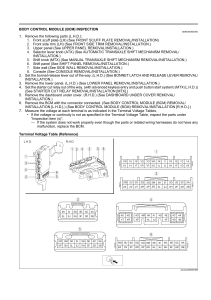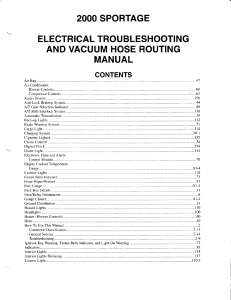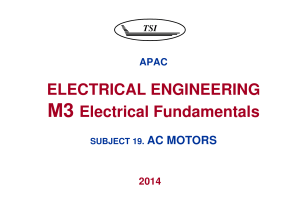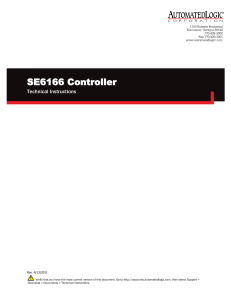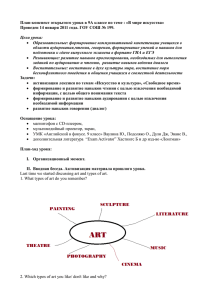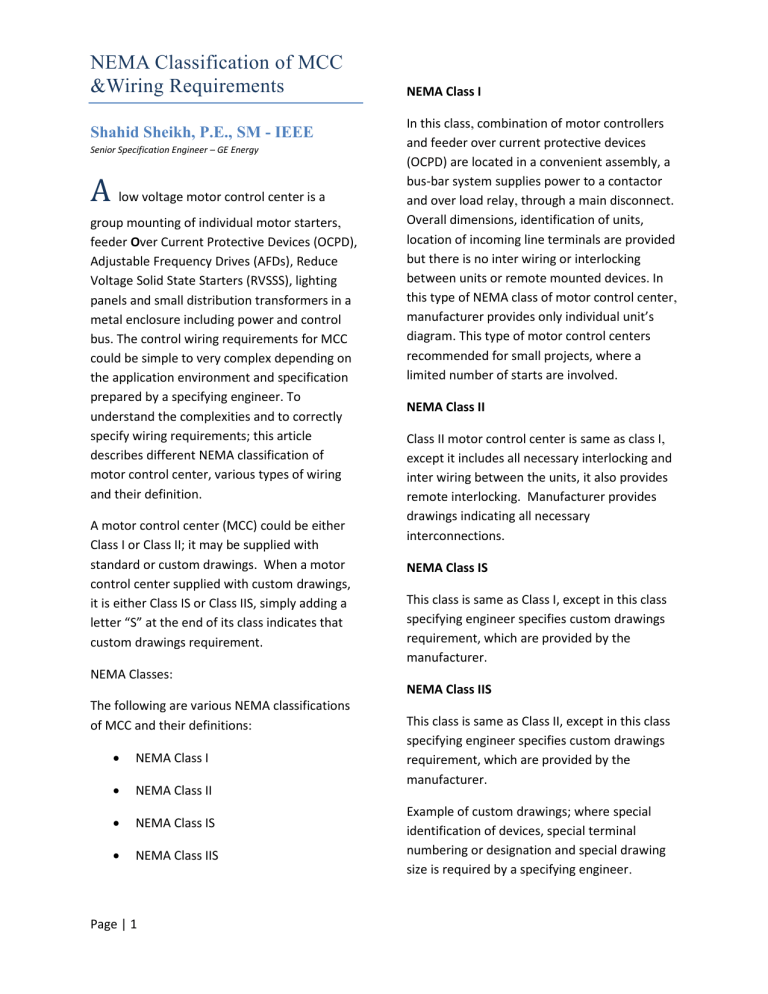
NEMA Classification of MCC &Wiring Requirements Shahid Sheikh, P.E., SM - IEEE Senior Specification Engineer – GE Energy A low voltage motor control center is a group mounting of individual motor starters, feeder Over Current Protective Devices (OCPD), Adjustable Frequency Drives (AFDs), Reduce Voltage Solid State Starters (RVSSS), lighting panels and small distribution transformers in a metal enclosure including power and control bus. The control wiring requirements for MCC could be simple to very complex depending on the application environment and specification prepared by a specifying engineer. To understand the complexities and to correctly specify wiring requirements; this article describes different NEMA classification of motor control center, various types of wiring and their definition. A motor control center (MCC) could be either Class I or Class II; it may be supplied with standard or custom drawings. When a motor control center supplied with custom drawings, it is either Class IS or Class IIS, simply adding a letter “S” at the end of its class indicates that custom drawings requirement. NEMA Classes: The following are various NEMA classifications of MCC and their definitions: NEMA Class I NEMA Class II NEMA Class IS NEMA Class IIS Page | 1 NEMA Class I In this class, combination of motor controllers and feeder over current protective devices (OCPD) are located in a convenient assembly, a bus-bar system supplies power to a contactor and over load relay, through a main disconnect. Overall dimensions, identification of units, location of incoming line terminals are provided but there is no inter wiring or interlocking between units or remote mounted devices. In this type of NEMA class of motor control center, manufacturer provides only individual unit’s diagram. This type of motor control centers recommended for small projects, where a limited number of starts are involved. NEMA Class II Class II motor control center is same as class I, except it includes all necessary interlocking and inter wiring between the units, it also provides remote interlocking. Manufacturer provides drawings indicating all necessary interconnections. NEMA Class IS This class is same as Class I, except in this class specifying engineer specifies custom drawings requirement, which are provided by the manufacturer. NEMA Class IIS This class is same as Class II, except in this class specifying engineer specifies custom drawings requirement, which are provided by the manufacturer. Example of custom drawings; where special identification of devices, special terminal numbering or designation and special drawing size is required by a specifying engineer. NEMA Classification of Wiring: NEMA further subdivides motor control centers based on various wiring classes. According to NEMA standard ICS 18-2001 (R2007), there are three different types of wiring: type A Wiring type B wiring type C wiring Type A wiring In this type of wiring, both power and control cables from outside of a motor control center are directly connected to the device terminals inside a combination starter or feeder units. No terminal blocks are provided for either power or control cables. This type of wiring is only provided in class I motor control centers. Type B wiring In this type of wiring, combination starters in a motor control center are equipped with control terminal blocks. All the control wires from a combination starter are connected within a unit to marked terminals on a terminal block. The user brings field control wiring, if required, into each combination starter unit inside a motor control center and connections are made at each marked terminal block. In 1994, NEMA standards ICS 18-2001(R2007) subdivide type B wiring into two categories: Type B-D Type B-T Type B-D – In this case, the combination starters power cables are directly connected to an over load relay’s terminals and feeders power cables are connected to an over current protective device terminal. Page | 2 These devices should be located immediately adjacent to vertical wire-ways and should be readily accessible. Type B-T – Power cables are connected to a power terminal block, which should be located immediately adjacent to vertical wire-way and should be readily accessible. The combination starters size 1 through 4 are offered as type B-D as standard, and type B-T as optional. The size 5 and size 6 starters are always offered as type B-D. Adjustable Frequency Drives (AFDs), Reduce Voltage SolidState Starters (RVSSS) and multi-winding motor starters are offered as type B-T. Type C Wiring In this type of wiring, the user connects the field control wiring to a master terminal block, mounted in the horizontal wire-way, at top or bottom of a vertical section. The control wiring from each combination starter’s terminal block to a master terminal block, mounted at either top or bottom, is done at the factory. In this type of wiring, power cables from the field brought into horizontal wire-way at top or bottom of each vertical section and connected to master power terminal block. This Master Power Terminal Block is pre-wired to each combination starter unit at factory. In case of combination-starters larger than size 3, the user brings power cable directly into a starter unit instead of master terminal block; Power cables are directly connected to load terminal of overload relay. NEMA Classification for MCC and types of wiring: When specifying a motor control center, a class I or a Class II MCC, could be combined with different types of wiring. Following are various combinations of different NEMA classes of MCC with different types of wiring. 1. Class -IA 6. Class -ISA 2. Class -IB 7. Class-ISB 3. Class- IC 8. Class-ISC 4. Class -IIB 9. Class-IISB 5. Class -IIC 10. Class-IISC Class I A Provides only power wiring from disconnect to a starter. Provides no control wiring and no interlocking. No terminal blocks are provided. Horizontal Wire-way Circuit Breaker Disconnect Power Cable MCC Bucket Contractor O/L Relay Figure 1 Page | 3 Class IB The draw-out units (MCC buckets) are equipped with terminal blocks. All control wires from a motor starter are connected to marked terminals on a terminal block. The customer brings field wiring to each bucket and connections are made at the terminal block. Power cables are connected as per type B-D or type B-T Horizontal Wire-way Circuit Breaker Disconnect Power Cable Bucket MCC Control Terminal Blocks Power Terminal Blocks Contractor Figure 2 Page | 4 Class IC Master terminal blocks are installed at either top or bottom of each vertical section in horizontal wire-way. The wiring from a bucket’s terminal block to master terminal block is completed at the factory. The user makes all fields wiring connection at mater terminal block. Horizontal Wire-way Power Cable MCC Bucket Control Terminal Blocks Circuit Breaker Disconnect Power Terminal Blocks Figure 3 Page | 5 Class IIB Class IIB wiring is similar to class IB except interconnecting wiring between motor starters in the same or different vertical sections is done at the factory. Horizontal Wire-way Power Cable Bucket MCC Control Terminal Blocks Interconnecting Wiring Power Cable Bucket MCC Control Terminal Blocks Figure 4 Page | 6 Class IIC Class IIC wiring is similar to class IIB except a master terminal block either at the top or bottom of each vertical section is provided. Horizontal Wire-way Power Cable Bucket MCC Control Terminal Blocks Interconnecting Wiring Power Cable Bucket MCC Control Terminal Blocks Figure 5 Page | 7 In Class ISA, ISB, ISC, IISB and IISC letter S indicates the requirement of custom drawings specified by a specifying engineer, all other requirement are the same as describe for respective classes. The following table summarizes all the NEMA classes and types of wiring for motor control center. Class I Class IS Class II Class IIS A B C A B C B C B C No Yes Yes No Yes Yes Yes Yes Yes Yes No Yes Yes No Yes Yes Yes Yes Yes Yes No Yes Yes No Yes Yes Yes Yes Yes Yes Yes Yes Yes Yes Yes Yes Yes Yes Yes Yes No No Yes No No Yes No Yes No Yes No No No No No No No No No No Yes Yes Yes Yes Yes Yes Yes Yes Yes Yes No Yes Yes No Yes Yes Yes Yes Yes Yes No No Yes No No Yes No Yes No Yes No No No No No No Yes Yes Yes Yes Yes Yes Yes Yes Yes Yes Yes Yes Yes Yes Yes Yes Yes Yes Yes Yes Yes Yes Yes Yes No No No No No No Yes Yes Yes Yes Schedule of wires to master terminal blocks No No Yes No No Yes No Yes No Yes Custom drawings as specified by user No No No Yes Yes Yes No No Yes Courtesy of GE Industrial Systems Yes Type of Power or Control Termination Furnished Pull-apart and numbered control terminal boards on unit starter–Sizes 1, 2, 3 and 4 Stationary and numbered control terminal boards on unit starter – Sizes 5, 6 and 7 Pull-apart and numbered power terminal boards on unit starter –Sizes 1 and 2. (On Type A wiring: Same type of numbered terminals on starter itself for Sizes 1, 2, 3 and 4) Numbered terminals on starter itself for power connection with no power terminal boards – Sizes, 5, 6 and 7 Stationary master terminal boards (Top, bottom or rear of section) For control – Sizes 1 thru 5 / For power – Sizes 1 thru 3 Unit terminal boards for feeder tap units and distribution panels Starter-unit-mounted pilot devices internally wired to starter – Sizes 1 thru 7 Terminal board points for remote devices (Excluding extra tie points) Master terminal-board wiring connections Factory-wired interconnections between units in the same motor control center Type of Drawings Furnished Outline and summary sheet (Schedule of units) Unit elementary wiring diagrams showing numbered terminal points (Terminal boards not furnished on Type A) Unit elementary wiring diagrams showing numbered terminal points and interconnections to other units and/or to the first level of remote devices References: I. The Electrical Systems Design & Specification Handbook for Industrial Facilities By Steven J. Marrano, Craig DiLouie II. Switchgear and Control Handbook – By Robert W. Smeaton , McGraw Hill Book Company, New York, USA. III. IEEE Recommended Practice for Electrical Power Systems in Commercial Buildings, IEEE Std. 241-1983. IV. NEMA Standards Publication ICS 18-2001 (R2007) publish by National Electrical Manufacturer Association. V. Application Guide for Motor Control Centers by GE Industrial System, Plainville Connecticut, USA. Page | 8
